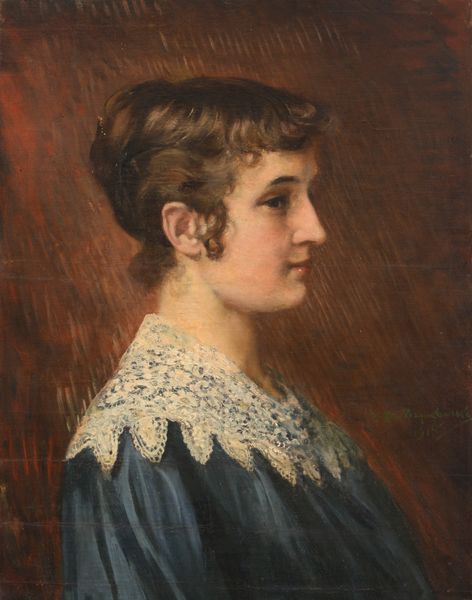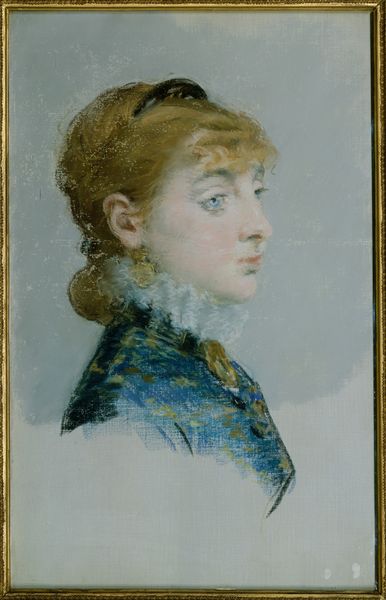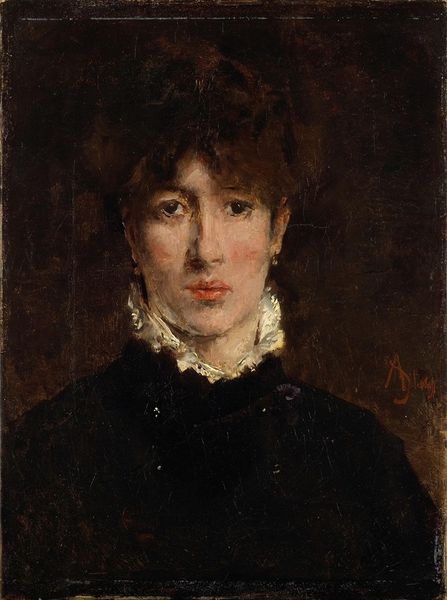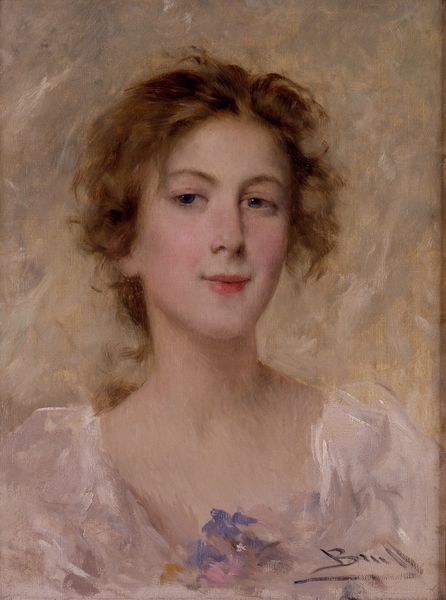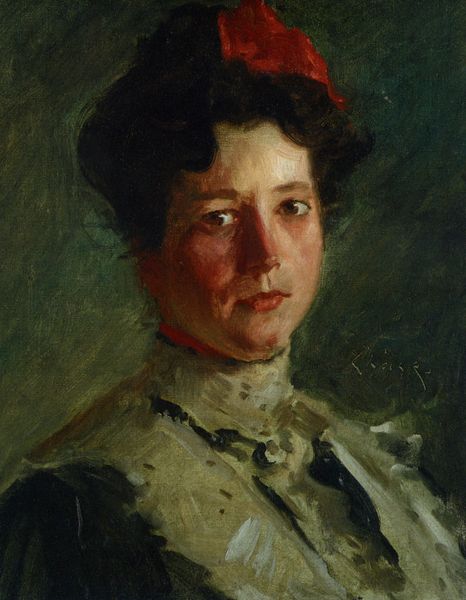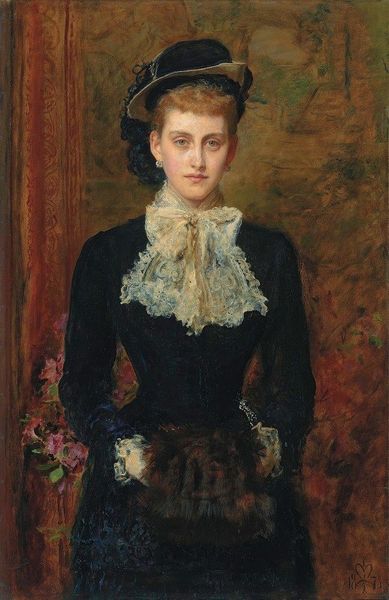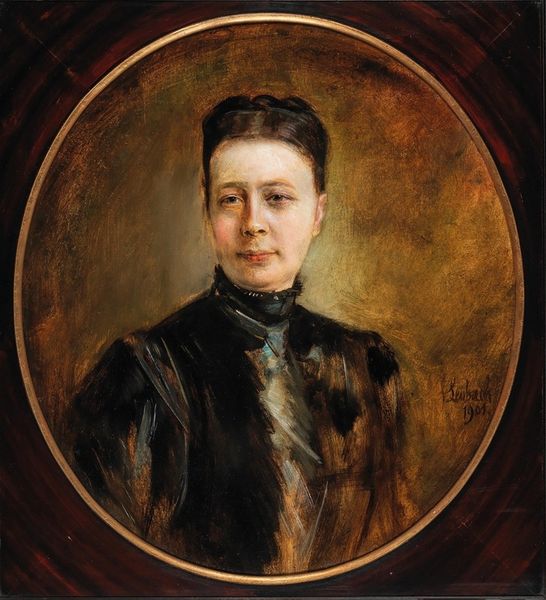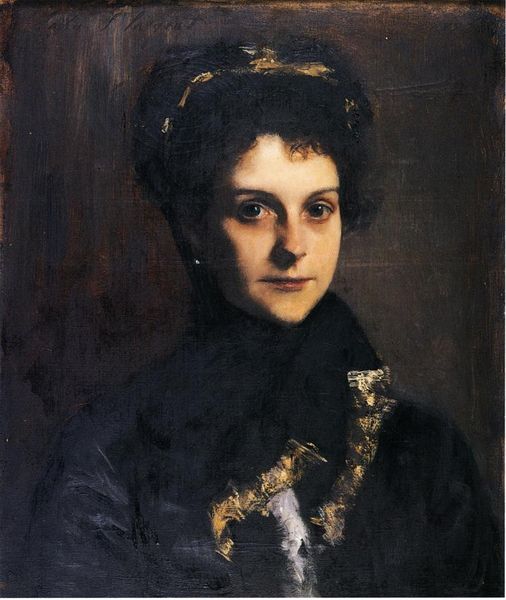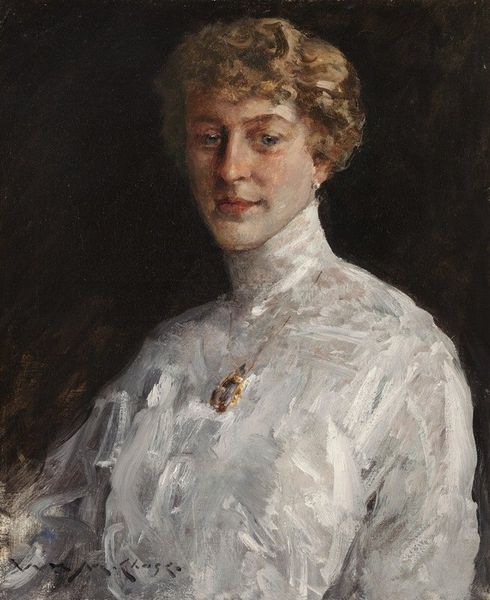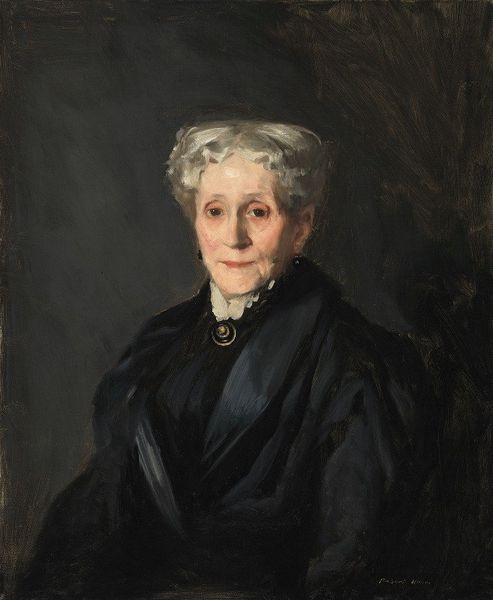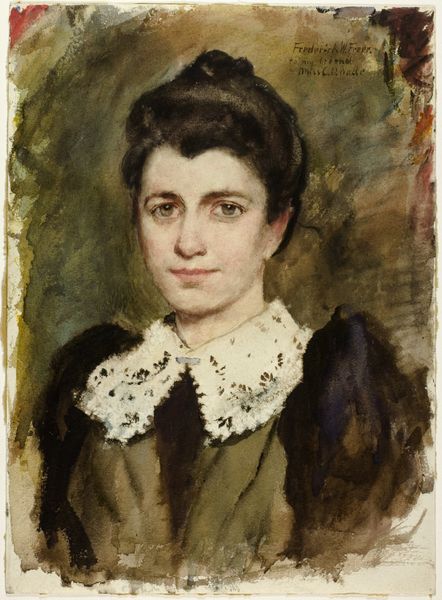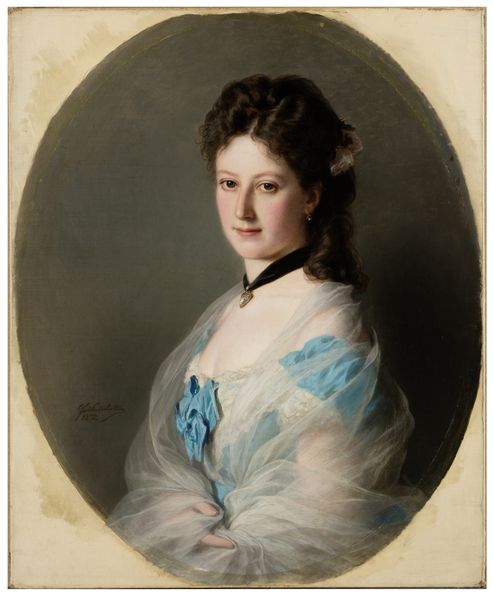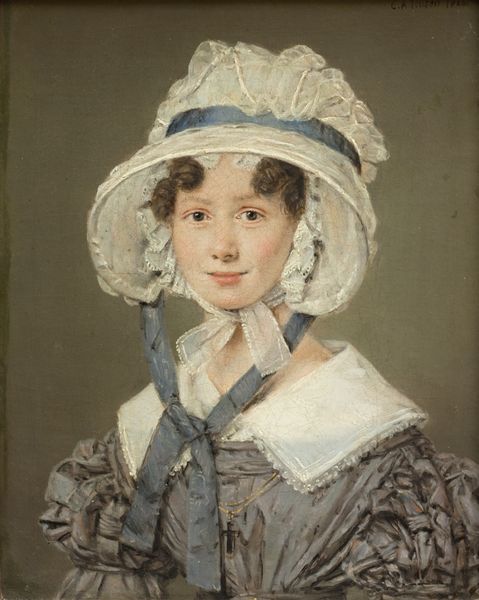
Queen Maria Cristina of Habsburg-Lorraine 1887
0:00
0:00
raimundodemadrazoygarreta
Museo del Prado, Madrid, Spain
Copyright: Public domain
Editor: We’re looking at Raimundo de Madrazo’s 1887 oil painting, "Queen Maria Cristina of Habsburg-Lorraine." It has a somewhat somber mood, and her dark clothing stands out against the muted background. How do you interpret this work? Curator: Consider the symbols, both overt and subtle. Maria Cristina, in widow's black, embodies grief, yet her Habsburg lip speaks of dynastic endurance. Her gaze, direct but not confrontational, tells of responsibility. Even the jewelry is less about opulence, more about the weight of expectation and the continuity of power through her son, the future king. Editor: So, you see the medals as communicating authority, rather than just beauty? Curator: Absolutely. Medals, ribbons, brooches – these aren't mere ornaments. They’re badges of honor, of service, of a place within a very specific societal structure. Notice how the painter hasn't overly idealized her; it’s a portrait intended to convey the gravity of her position as Queen Regent. Does it make you think about other portraits you may have seen, how this one aligns, or diverges? Editor: Yes, many portraits of royalty at the time were grander. I guess this portrait communicates a very different message by not doing so. Curator: Precisely. What does it tell us that Madrazo chose a realistic rather than idealized depiction, and used objects –like her attire and jewelry – as statements of purpose, even vulnerability? The brushwork, the colors… every element serves the narrative. Editor: It’s fascinating how much a seemingly simple portrait can communicate about power, loss, and duty. Thanks for sharing that! Curator: It's a pleasure to bring new awareness to such an historical figure through the use of cultural objects in her image.
Comments
No comments
Be the first to comment and join the conversation on the ultimate creative platform.
